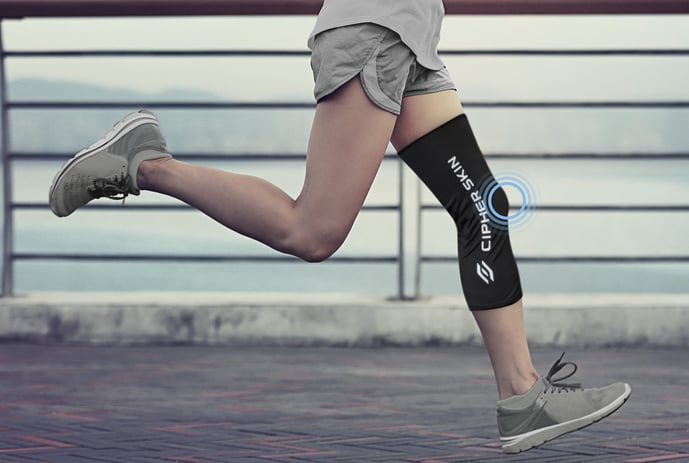The Better Way to Analyze Running Cadence
Like any other athletic movement, running is a skill that can be measured, trained, and improved. The ability to run fast and without injury is heavily dependent on running technique. Studies have shown that real-time feedback on running techniques can reliably improve stride, help athletes run faster and longer with less effort, and reduce the stress placed on the body. In short, it's a key metric for faster times, better recovery, and fewer injuries.
Walk This Way
Every walking step can impose a load on the knee comparable to two to three times a person's body weight. When they start running, these loads can increase to anywhere from 5 to 12 times their body weight. While this load is higher, they also experience it for a shorter time. Fun fact: While walking, feet are on the ground about 60% of the time. When running, this decreases to around 30%.
The increased force is somewhat balanced by the decreased time upon which that stressor is placed on your body. But, five to 12 times your body weight still a wide range, and where a runner falls within this range depends heavily on your technique.
Running cadence is an important window into running technique that can inform many things about efficiency and your athlete's ability to run fast and far without injury.
What is Running Cadence?
Cadence is the number of steps a runner takes per minute. If you comb through data on runners, you’ll find that better runners tend to have faster cadences which cause impact forces and injury rates to increase as cadence drops.
Many running coaches advise that cadence should be in the 170-180 steps per minute range, although it’s difficult to give an exact number without accounting for various individual characteristics. This number will decrease when someone is taller and increases as a running pace quickens. A short runner sprinting for a mile could have a cadence above 200, while a 6’ 4” athlete running a half marathon may be running efficiently at 160 strides per minute. The important thing is developing a running technique in a way that produces an optimal cadence for each individual athlete.
Developing the Perfect Running Cadence
If cadence steps are too low, a running will take long strides that slam forcefully into the ground and slow them down – an effect known as a braking impulse – causing them to pull themselves forward to re-accelerate. This is inefficient, diminishes the return of elastic energy in the soft tissues, and increases impact forces on the knees, hips, and ankles.
A faster cadence places the initial loading of each stride closer to a runner's center of mass, which reduces ground contact time and the braking impulse of each step. This also decreases pressure and force measures across the heel and metatarsals of the foot. Lastly, faster cadence increases the “stiffness” of the legs by positioning joints in a way that allows for more springlike movement with each stride.
Changes in running cadence mean that the ankles and knees are landing at different angles because of shorter, faster strides with the feet landing more underneath the body. This changes many other things like the angle of the tibia relative to the ground at contact and throughout the running stride, as well as the rate of acceleration of the tibia at different points in a stride.

Improving Running Cadence
The Cipher Skin BioSleeve — Knee can measure all of these angles, velocities, and cadence data in real-time. This allows coaches, athletic trainers, physical therapists, and runners, to see real-time feedback on running form to make informed decisions about the efficiency of each stride.
This goes beyond the narrow data set that can be extrapolated from a wrist-top device and provides a more complete picture of everything the body is doing as it runs. This new level of insight means more effective training and performance for individual athletes, as well as a revolutionary level of data management for coaches, athletic trainers, and researchers. Cipher Skin takes the data power of a biomechanics lab and puts it into a comfortable, wireless sleeve that anyone can benefit from.


